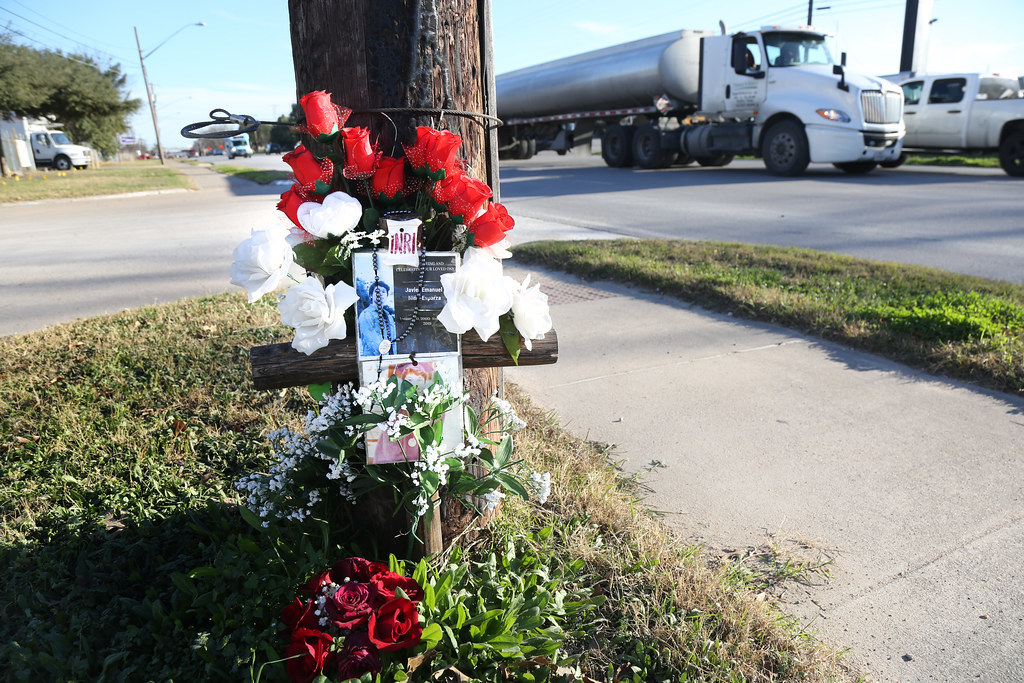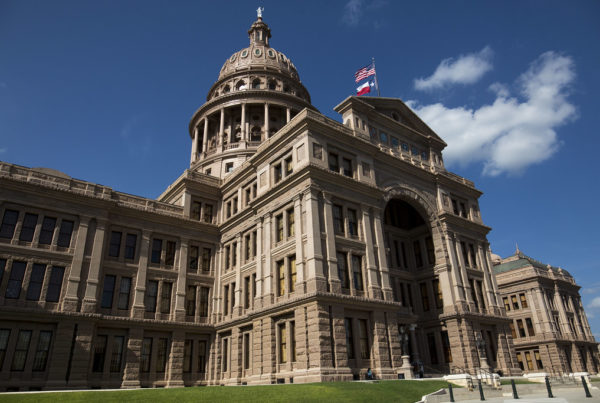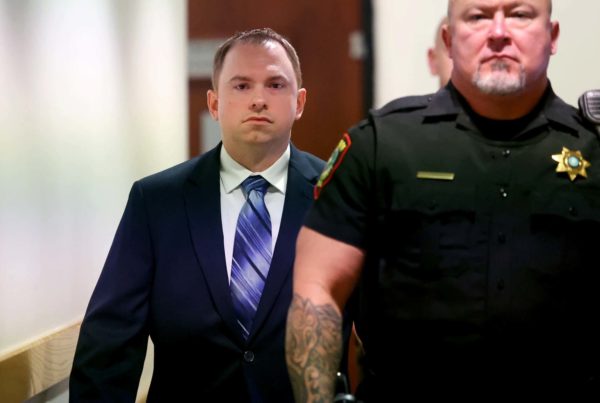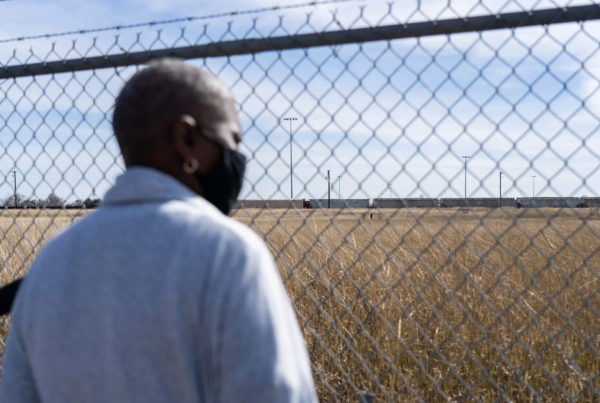Tens of thousands of people die in traffic accidents each year in the United States, a trend that’s unfortunately moving in the wrong direction. The National Highway Traffic Safety Administration estimates that more than 42,000 people died last year in motor vehicle crashes, with nearly 5,000 of those deaths in Texas.
In response, cities and states have adopted Vision Zero, an objective to bring traffic injuries and fatalities down to zero. Vision Zero goals have been adopted by cities including Houston, Austin, Dallas and San Antonio.
Angie Schmitt, a planning consultant and author of “Right of Way: Race, Class and the Silent Epidemic of Pedestrian Deaths in America,” joined the Texas Standard to talk about Vision Zero and why traffic deaths have been so difficult to bring down.
This transcript has been lightly edited for clarity:
Texas Standard: How would you say the cause of Vision Zero is going across the United States just writ large?
Angie Schmitt: In a lot of cases, it’s going pretty badly. We’ve seen a big increase in traffic deaths across the United States in the last few years. The problem actually got a lot worse during the pandemic. And so a lot of cities that have made pledges to Vision Zero have seen, actually, progress get worse – a lot more traffic deaths than just a few years ago.
What specifically does “Vision Zero” mean for a city? What are they pledging to do?
For a long time in the United States, our sort of approach to traffic safety was very accepting of traffic deaths. We just kind of assumed we were going to have about 40,000 traffic deaths every year, and we would maybe aim to do a little bit better. But Vision Zero is this concept that comes out of Sweden, out of Europe, and is now an international best practice. And it flips that idea on its head and it says, “Listen, no, we shouldn’t be planning for any deaths. We can design deaths and injuries out of our transportation system if we’re deliberate enough about it.” So there’s been a lot of success with that approach in some of our peer nations, especially in Western Europe, where they might have traffic death rates that are a quarter or a fifth as high as ours.
You recently wrote a piece in CityLab detailing where Vision Zero appears to be working. I want to talk a little bit about a tale of two cities: You point out New York has made some rather successful efforts, but you compare that to Houston, where traffic deaths were up 20% year over year for 2021. What’s New York getting right, and what’s Houston getting wrong? Is it that simple?
New York has been at this for a long time, and obviously it’s a very different kind of city, right? They have a different build environment and a lot more people are taking the subway. But even so, I think they’ve been much more intentional about this; they put much more resources into it. New York is redesigning thousands of intersections every year, and it’s not very expensive or very time-consuming interventions that can have a big impact on safety. So in the article, I say New York’s deaths are down about 19% in the last decade, where national deaths are up 8%. So that translates into more than 50 lives being saved in New York City every year. And if cities in Texas could meet the same sort of standards, it would be enormous, how many lives would be saved.
Right now, a lot of efforts around reducing traffic deaths are awareness campaigns built around drunk driving or wearing seatbelts – you know, “click it or ticket;” we’ve all heard that. But from what I understand, a lot of experts say speed is a No. 1 killer when it comes to traffic deaths. What would broader reform look like?
I think one reason you see Houston, just to get back to your previous question, trailing New York City is because the state of Texas is not a leader on this. The Texas Department of Transportation really prioritizes speed over safety in a lot of its decisions. And one of the examples I use in my article, actually, they stood in the way – the Texas Department of Transportation. San Antonio had a road diet project planned, where they were going to redesign a street to emphasize safety for everyone, including cyclists and pedestrians. And the state of Texas quashed the project.
The state of Texas has an enormous budget, and they’re using it for huge highway expansions. And the share of money they devote to things like sidewalks and bike lanes is really minuscule. And I think that those efforts that you mentioned – where they really kind of resort to a lot of lecturing about, you know, wearing your seatbelt, drunk driving – a lot of time, they’re lecturing pedestrians, even when pedestrians are struck and hurt in the right of way. Sort of their go-to is to blame them. And I think that’s really ineffective and that they should take a larger responsibility for the safety problems and they need to change some of the way they do business.















